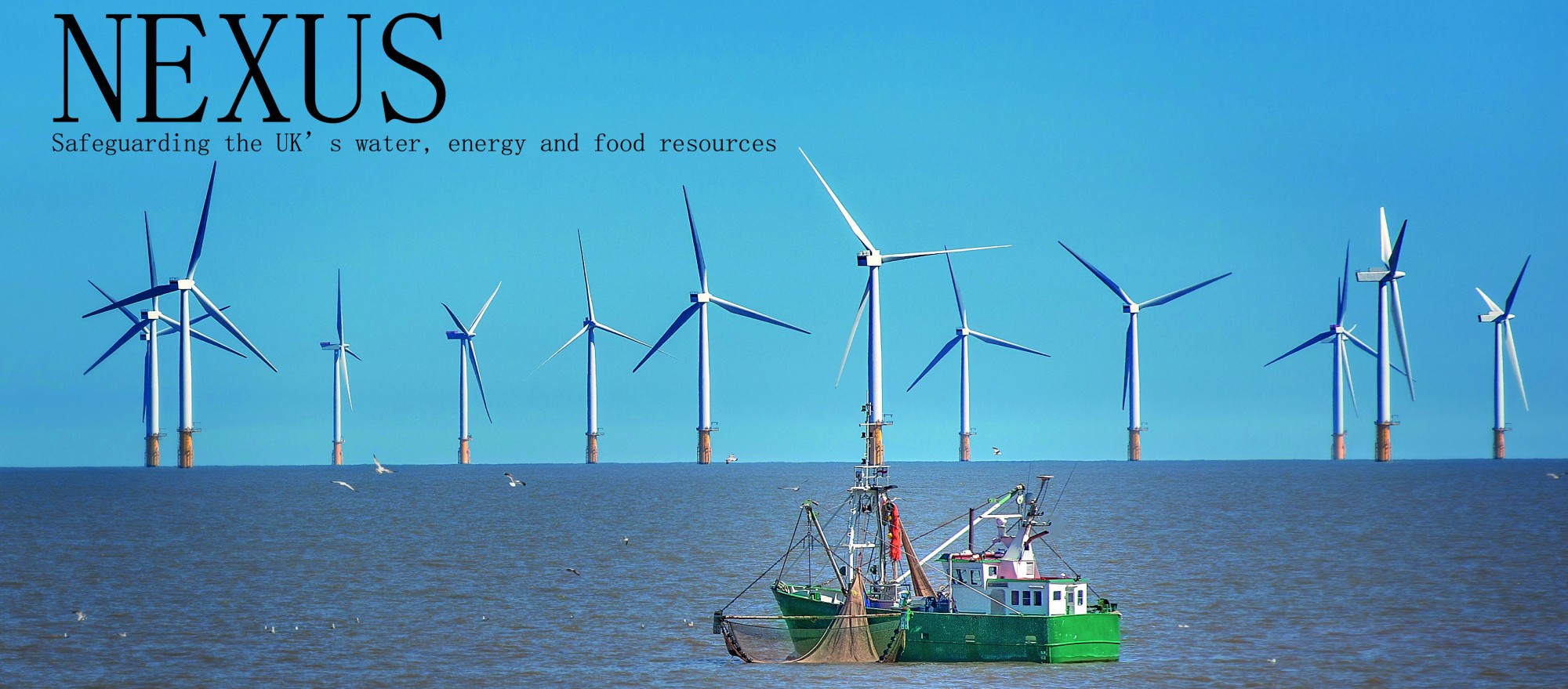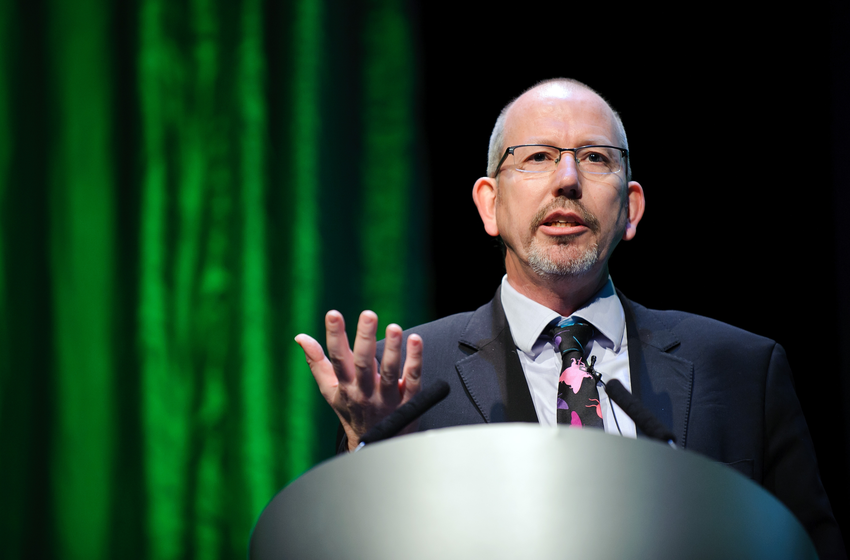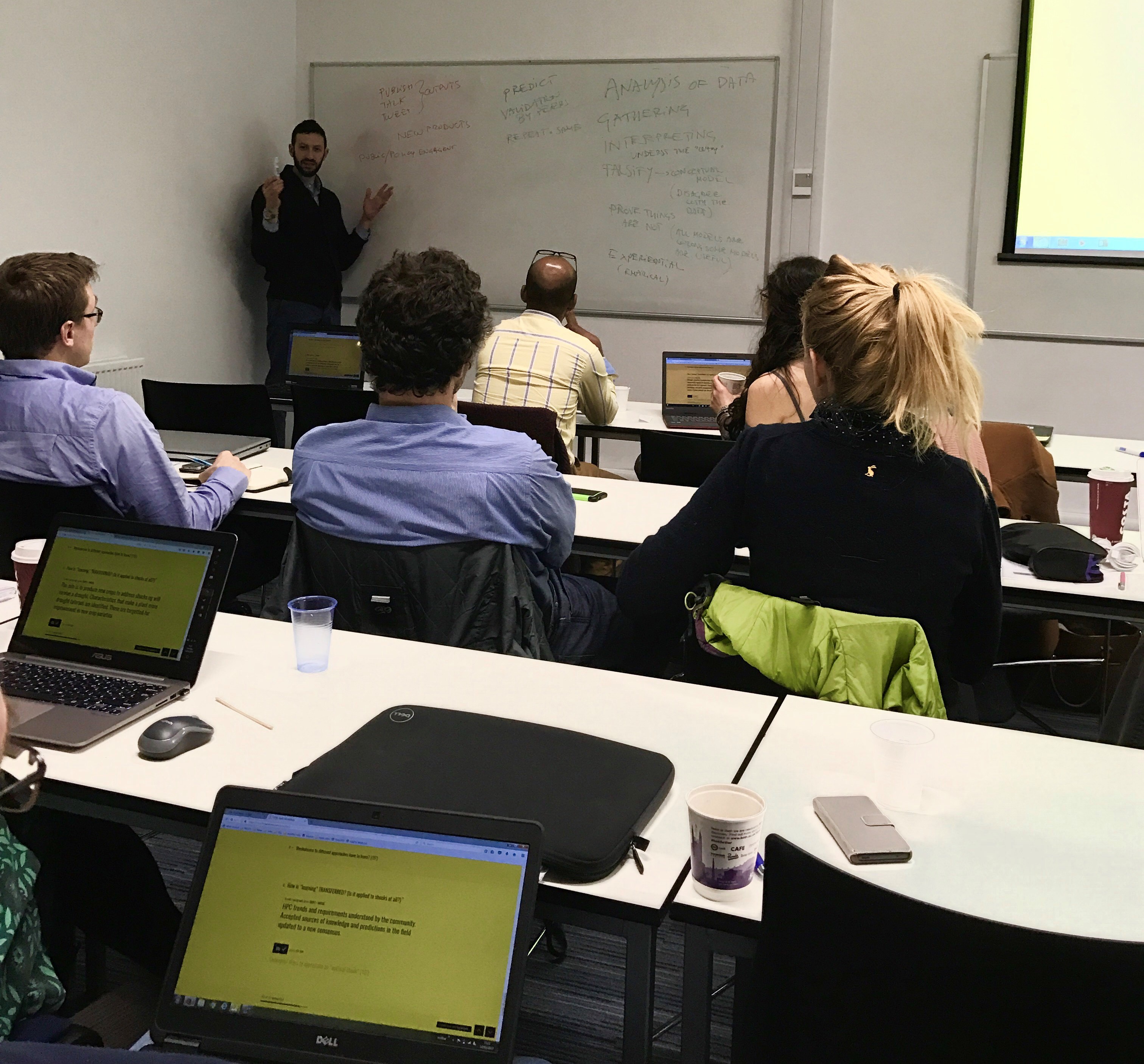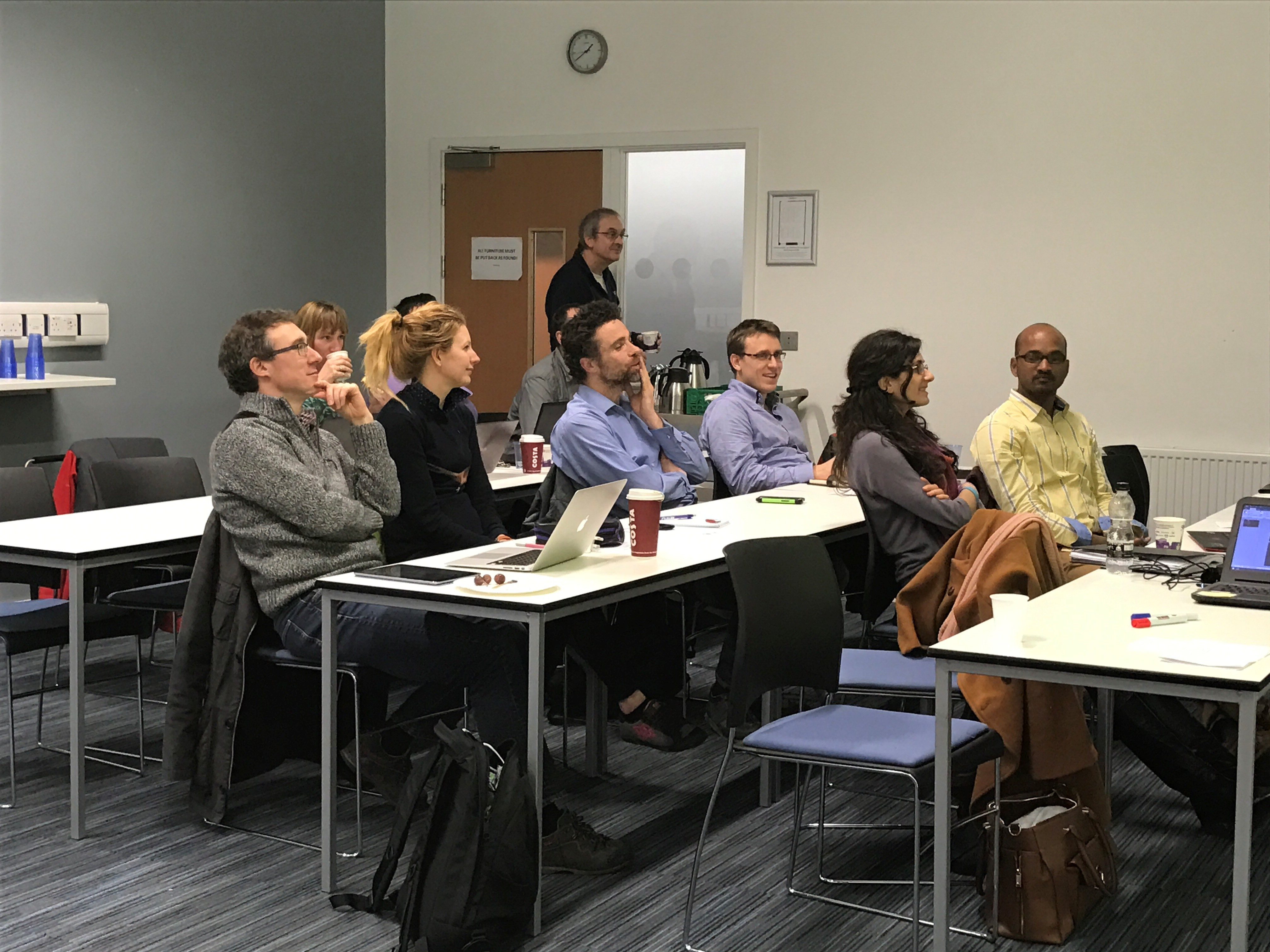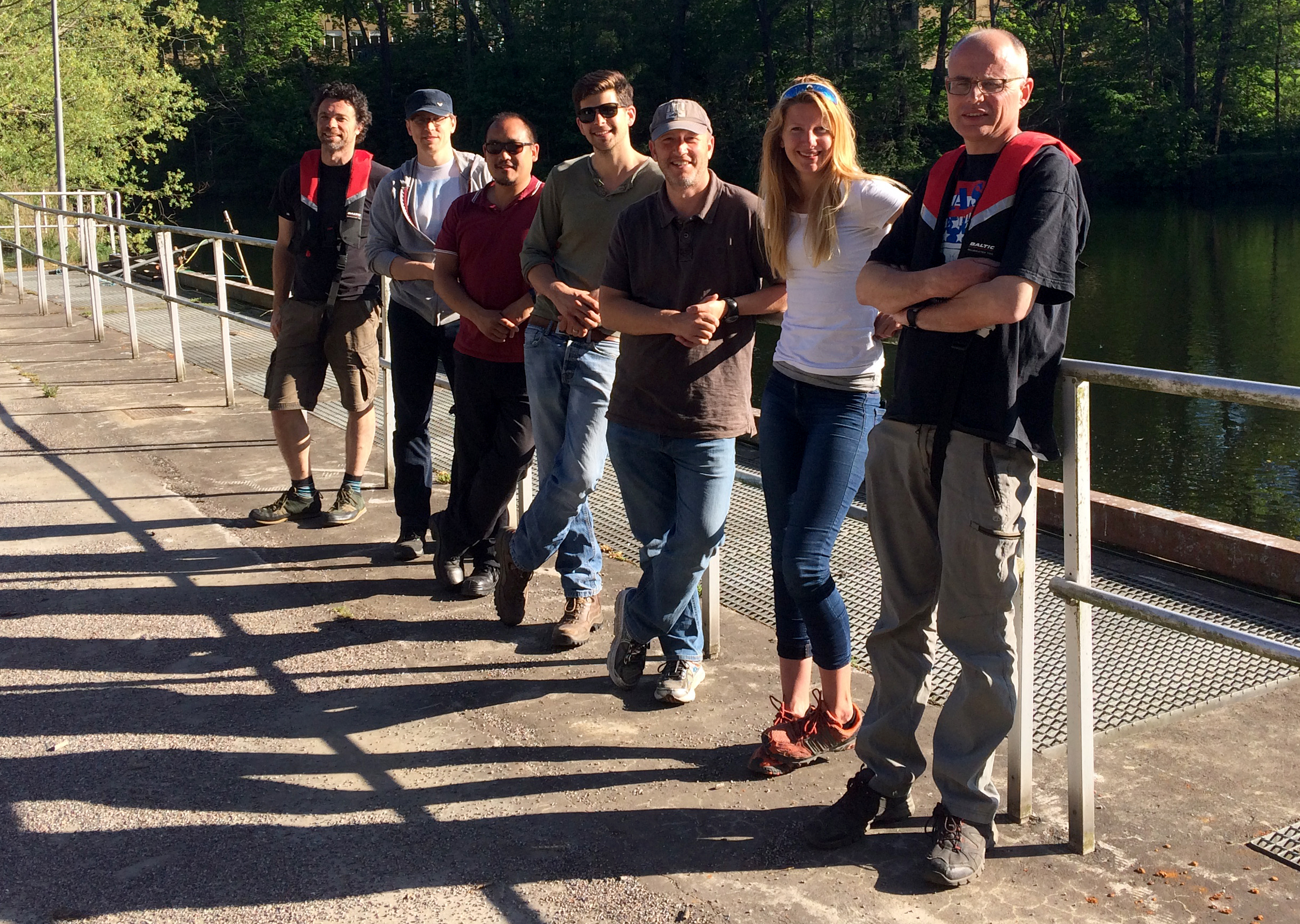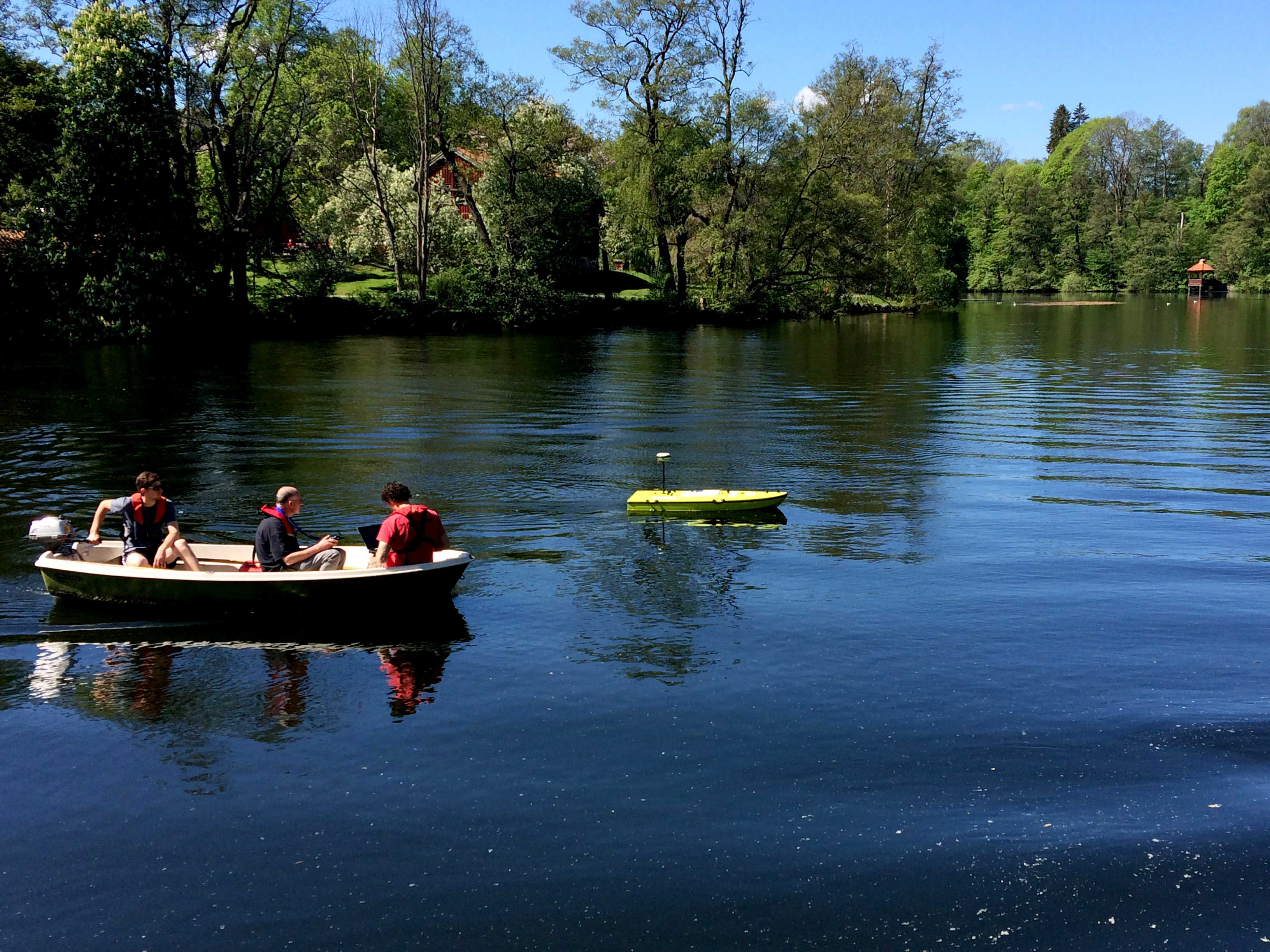DECEMBER 2015: Vaccinating the NEXUS (VTN) start-up meeting, Didcot Power station, Oxfordshire
Our key industrial partner, RWE Npower hosted the VTN start-up event. Following introductions and outlining aims and objectives, the VTN team discussed with partners the potential challenges and pitfalls of the planned project, and gained valuable insight into the industry perspective, particularly in relation to the development of renewables, planned ‘End of Coal’ in electricity generation, and consent processes under stringent environmental legislation. Participants enjoyed a tour of the plant, which included a visit to the cooling water offtake and the fish screening facilities.
APRIL 2016: Second VTN meeting at Thames Barrier and the Crystal, London
On a cold and wet day the VTN team braved the elements during a visit to the Thames Barrier before retreating to the Crystal, a Siemens sustainable cities building. The participants focused on updating the group on work package progress and future project planning. The main focus of the meeting, however, was getting to know the postdocs employed on the project and to develop links for postdoctoral networking and opportunities for collaborative exchange.
JUNE 2016: University of Southampton University Strategic Research Group (USRG) in NEXUS Science
Building on the VTN project a new USRG in Nexus Science was launched at the University of Southampton. The inaugural event involved a guest lecture givenby Professor Tim Benton, the UK Governments Champion for Global Food Security, and was attended by members of the VTN team, including industry partners, and a representative from EPSRC. The accompanying workshop focused on defining key challenges faced in the WEF NEXUS sphere.
JULY 2016: VTN WP1 meeting at HR Wallingford, Oxfordshire
This meeting involved key participants from work package 1: Southampton, HR Wallingford, and Nottingham. Literature analysis and experimental research to quantify eel response to hydrodynamic is well underway; the next challenge being the development of an Agent Based Model to predict eel migratory paths in estuaries, how to validate these at test sites with eel movement data in Sweden, before final application to a key case-study in the UK. Participants discussed potential challenges and commenced planning of future workshops.
August 2016: BBC Countryfile Live, Blenheim Palace
In August 2016 VTN, CDT-SIS and ICER students and staff joined the University of Southampton Roadshow to host a science tent at the inaugural BBC Countryfile Live. Over four days the event attracted in excess of 100’000 visitors and was televised on the BBC’s prime time Countryfile programme. The University of Southampton was the only science tent invited and we had the largest exhibition space. With a range of staff and students on hand to explain VTN research we found that engagement was extremely high with a long linger time, return visits and original visits due to word of mouth. A roundup of the event can be seen HERE.
OCTOBER 2016: VTN WP1 Agent Based Modelling week at HR Wallingford, Oxfordshire
Post-doctoral researchers from Nottingham and Southampton joined colleagues at HR Wallingford for a week long Agent Based Modelling initiative. The week involved the construction of a small-scale model for downstream moving fish with a case study example; a model for upstream moving fish through an estuary and fish pass; and consideration of temperature regime as well as hydrodynamics.
OCTOBER 2016: Third VTN meeting – Hockerton Housing Project, near Nottingham.
The whole VTN team reconvened for the third progress and planning meeting at the Hockerton Housing Project in Nottinghamshire. After tracking overall project progress against milestones and splitting up into work page subgroups (which included a skype meeting with project partners at the Swedish University of Agriculture to discuss validation of the Agent Based Model), the participants embarked on a tour of the site. The housing project (commenced in 1998) was designed to be sustainable and consists of five troglodyte earth sheltered homes with a heating system based on thermal mass storage, passive solar gain, and super-insulation and buffer zones. The small community generates electricity with two wind turbines, maintains its own water supply and waste water treatment, and produces much of its own food.
NOVEMBER 2016: VTN WP1 Quantification of fish movement workshop, Southampton
In an effort to widen participation and provide added value to the VTN project this workshop was held in collaboration with the EPSRC funded Centre for Doctoral Training in Sustainable Infrastructure Systems (CDT-SIS), the International Centre for Ecohydraulics Research (ICER), and the Institute for Sound and Vibration Research (ISVR). Participants discussed methods to quantify animal movement trajectories using a range of techniques including video analysis, particle tracking, hydroacoustics, and telemetry. The use of the data for the development of predictive tools, including Agent Based Models developed as part of the VTN project, was considered. Participants also benefitted from the deliverables obtained from one of the CDT-SIS cohort building activities, the ‘Great CDT Bake-off’.
March 2017: Interactive Session on Shocks & Learning
The Fourth Vaccinating the Nexus Project was held in Bath. During the meeting we had updates on work package progress, planned continuing field work in Sweden and the UK, and conducted surveys to determine variation between disciplines on definition of “shocks” and how we might quantify and monitor them.
May 2017: Mapping of river hydrodynamics in Sweden
The work package 1 team met up in Norrköping, Sweden, to map the bathymetry and hydrodynamics of a reach of river on approach to a hydropower intake and associated weirs, using a remote controlled Acoustic Doppler Current Profiler (ADCP) – known as the “ARC boat”. The map will be used to inform an integrated hydrodynamic and agent based model which will predict the downstream movement of eels as they approach the infrastructure. Working with colleagues at the Swedish University of Agriculture and the University of Karlstad, our model will be validated through comparing the results with those obtained for real eel movements monitored using fine-scale acoustic telemetry. This will be the first study in which an agent based model developed for downstream migrating eels will be field validated.
27th September 2017: Fifth VTN Meeting, Loughborough
Updates of activities and plans for the next phase of research were discussed at our fifth project meeting involving integration of all work packages. A future publication plan was developed at this meeting.
25th April, 2018: VTN meeting, Cambridge
The sixth VTN meeting was held in Cambridge where updates on progress of all work packages were provided, with discussion of future publications and ways forward for future collaboration in this field. We discussed potential policy implications of our work.
May 2018: Agent Based Modelling Week, Nottingham
Continuing the programme of developing an Agent Based Model to help plan infrastructure development and operation that mitigates negative environmental impacts (on fish), a meeting was held at the University of Nottingham to push the envelope into the Baysian sphere.
27th – 28th June 2018: Interdisciplinary Nexus Science and Fish Cognition Workshop, Southampton.
We were joined by world leading experts in an innovative interdisciplinary workshop to explore creativity in Nexus Science, and implications for enhancing environmental impact mitigation technology to protect fish at river infrastructure as part of Work Package 1. Scientists from across the globe, including South Africa, Sweden, and the United States, with diverse backgrounds in physics, extra sensory perception, acoustics, biology, animal behaviour, materials engineering, agent based modelling, and fluid mechanics exchanged ideas and developed plans for new innovate ways forward.
9th July 2018: Cross project meeting at Lloyds Register, London.
The three projects that were funded through the Water-Energy-Food Nexus Ideas Factory “Sandpit”, Stepping Up, WEFWEBS, and Vaccinating the Nexus met to share results and experiences from their projects with the view to developing recommendations for future activies and ideas for continued funding in this area. Members of all three projects, the original advisory board, and an EPSRC representative attended this event.
24th October 2018: The VTN team met at Aberystwyth to review progress with the Miscanthus crop trials and update members on results of the work packages. This was the final meeting before the project conference to be held in 2019.
10th April 2019: Water/Energy/Food NEXUS: A Pathway to Collaboration Conference
On the 10th April 2019 the Water/Energy/Food NEXUS: A Pathway to Collaboration Conference was held at Boldrewood Campus at the University of Southampton. The conference featured presenters from various higher education institutions such as Loughborough, Nottingham, Aberystwyth and Southampton.
At the Conference various industry stakeholders were also represented, these included RWE, Environment Agency, BP and HR Wallingford. Presentations were also given by SPRINT, Future South and SETSquared detailing funding available for industry and research collaborators.
The conference was a great success and brought together research in the NEXUS and industry stakeholders to work together to forge strong partnerships and collaboration going forward in the Water/Energy/Food NEXUS research.
A copy of the Conference booklet can be found below.
